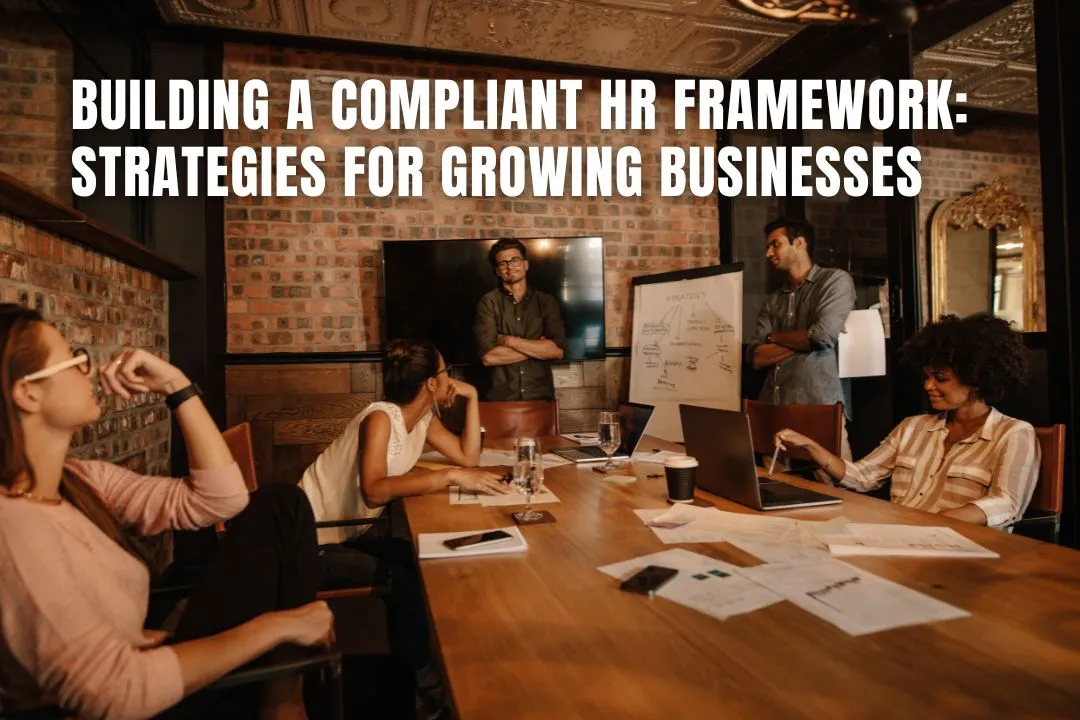
As a business starts to scale, managing people becomes more complex, and more critical. One slip in HR compliance can lead to serious legal headaches or costly fines. For growing companies, especially those transitioning from startup to established business, building a solid HR framework isn't just nice to have. It's essential.
But where do you begin?
Let’s walk through the practical steps to build an HR system that not only supports your team but also keeps your business compliant and future-ready.
Growth brings people. People bring policies.
A few employees might get by on informal communication and verbal agreements. But once you start expanding, you need structure. An HR framework or expert HR support UK helps ensure consistency, fairness, and legal compliance.. It also shows your team you care about their rights and wellbeing.
Ignoring HR compliance can cost more than you think. According to the U.S. Equal Employment Opportunity Commission, thousands of businesses are fined every year due to violations like discrimination, wrongful termination, and record-keeping failures.
The employee experience starts on Day 1. A strong onboarding process sets expectations and builds trust.
This is also the time to explain workplace policies and answer any compliance-related questions.
Documentation isn’t just bureaucracy. It’s protection.
Every employee should have a file that includes:
Proper record-keeping also supports compliance with labor laws. It shows due diligence in hiring, managing, and (if needed) terminating staff. Not sure what documentation to prioritize? Check out these HR compliance best practices for a helpful checklist.
Policies remove ambiguity. When your team knows the rules, they can play by them.
Create a comprehensive employee handbook that covers:
Keep your policies aligned with current employment laws. And make sure employees sign off after reviewing them.
Compliance isn’t a one-time setup. It’s an ongoing commitment.
Regular training helps:
Topics should include health and safety, anti-harassment, diversity, and data privacy. Make training interactive, and consider bringing in outside experts for specialized sessions.
Employment laws can change. Fast.
Whether it’s minimum wage increases or new health regulations, your HR framework must adapt. Use online tools, government bulletins, or legal subscriptions to stay informed.
For example, laws around remote work have evolved since the pandemic. If you're allowing flexible schedules, make sure your policies and tax practices reflect the current rules.
No business leader is an HR expert overnight. And that’s okay.
That’s where agencies come in. The role of employment agencies includes helping businesses find qualified talent, navigate labor laws, and handle complex hiring procedures. Partnering with one can save time and reduce legal risks.
Need help getting started? Here are a few go-to resources:
Also, consider HR management software platforms like Gusto, BambooHR, or HiBob. These streamline payroll, benefits, onboarding, and compliance tracking—all in one place.
Every growing business reaches that tipping point where casual no longer cuts it. That’s when structure steps in.
By implementing a compliant HR framework now, you’re building the foundation for a healthy, sustainable workplace. From onboarding to ongoing training, and policy-making to legal alignment, each piece matters.
Your team will thank you. Your future self will, too.
As a business grows, informal processes can lead to inconsistencies, unfair treatment, and significant legal risks. A formal HR framework establishes clear, consistent procedures that protect both the company and its employees, ensuring you comply with employment laws and foster a positive work environment.
Your employee handbook should clearly outline your company's code of conduct, anti-discrimination and harassment policies, procedures for leave and time off, and guidelines for technology use and remote work. It is also vital to have employees acknowledge they have read and understood it.
You can use government resources like Gov.uk, subscribe to legal newsletters, or use HR management software that provides updates. For complex situations, consulting with an HR specialist or legal expert is a wise investment to ensure you remain compliant.
Poor HR compliance can lead to serious consequences, including costly fines, legal disputes from issues like wrongful termination or discrimination, damage to your company's reputation, and low employee morale. Proactive compliance is always less expensive than reactive problem-solving.